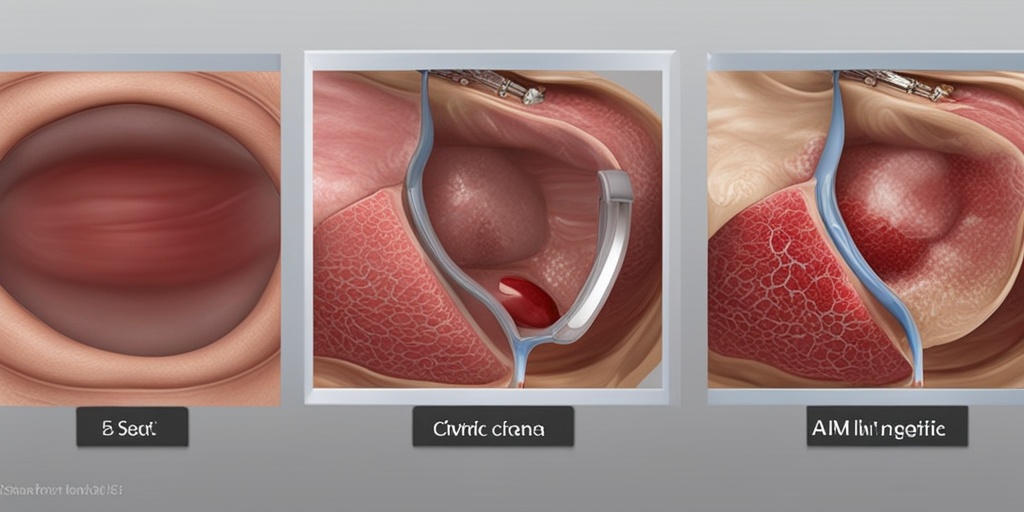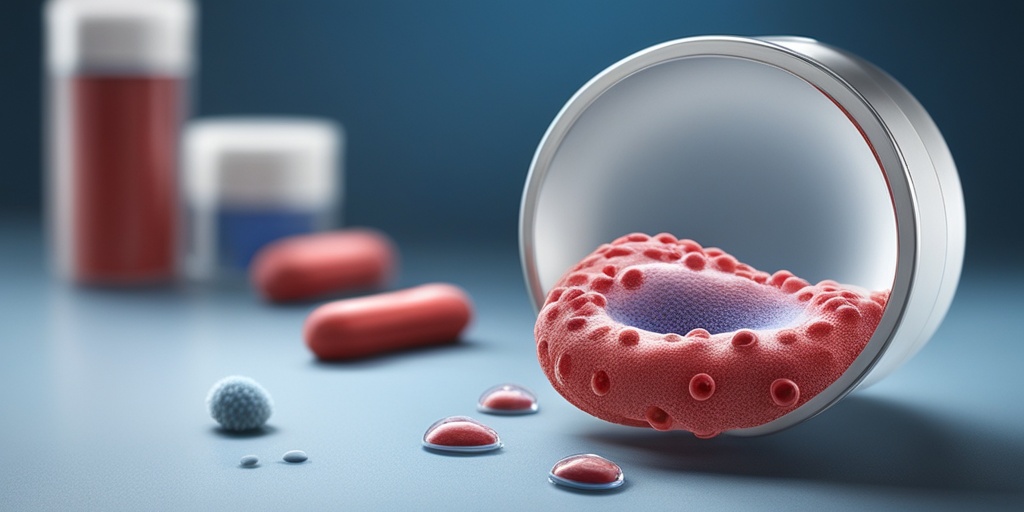What to Expect After Surgery
Congratulations! You’ve made it through the surgery, and now it’s time to focus on the recovery process. As you begin your journey to healing, it’s essential to know what to expect in the days and weeks following your operation. In this article, we’ll guide you through the importance of incision care after surgery and provide you with valuable tips to ensure a smooth and successful recovery.
The Initial Recovery Period
Immediately after surgery, you’ll likely feel groggy and disoriented from the anesthesia. This is completely normal. As the anesthesia wears off, you may experience some discomfort, pain, or numbness around the incision site. Your healthcare team will provide you with pain medication to manage any discomfort.
In the first few days, you may notice some swelling, bruising, or redness around the incision site. This is a normal part of the healing process. Your body is working hard to repair the tissues and close the wound.
Incision Care: The Key to a Successful Recovery
Proper incision care is crucial to prevent infection, promote healing, and reduce scarring. Your healthcare team will provide you with specific instructions on how to care for your incision. It’s essential to follow their guidance carefully to ensure a smooth recovery.
Importance of Incision Care
Incision care after surgery is vital to prevent complications and promote healing. Here are some reasons why incision care is so important:
Preventing Infection
Infection is a significant risk after surgery, and proper incision care can help prevent it. Keeping the incision site clean and dry can reduce the risk of bacterial growth and infection. Your healthcare team may recommend using antibacterial ointments or creams to apply to the incision site.
Promoting Healing
Proper incision care can promote healing and reduce the risk of complications. Keeping the incision site clean and moist can help the wound heal faster and reduce the risk of scarring. Your healthcare team may recommend using wound care products, such as gauze or bandages, to keep the incision site clean and protected.
Reducing Scarring
Proper incision care can also reduce the risk of scarring. Massaging the incision site with gentle, circular motions can help break up scar tissue and promote collagen production. Your healthcare team may recommend using scar creams or gels to help reduce scarring.
Remember, incision care after surgery is a critical part of the recovery process. By following your healthcare team’s instructions and taking good care of your incision, you can reduce the risk of complications and promote healing.
If you have any concerns or questions about incision care after surgery, be sure to reach out to your healthcare team. They’re there to support you throughout your recovery journey. Additionally, you can visit Yesil Health AI for evidence-based health answers and resources to help you navigate your recovery.
Stay tuned for our next article, where we’ll dive deeper into the best practices for incision care after surgery. 🏥💊

How to Take Care of Your Incision
After undergoing surgery, taking care of your incision is crucial for a smooth and speedy recovery. Proper incision care can help prevent complications, reduce the risk of infection, and promote healing. In this article, we’ll guide you through the essential steps to take care of your incision and ensure a successful recovery.
Keep the Incision Clean and Dry
Wash your hands thoroughly before touching your incision or changing the dressing. Gently wash the incision with soap and water, and pat it dry with a clean towel. Avoid using harsh or abrasive cleansers, as they can irritate the skin and delay healing.
Change the Dressing as Directed
Follow your healthcare provider’s instructions for changing the dressing. Typically, you’ll need to change the dressing daily or every other day. Gently remove the old dressing, clean the incision, and apply a new dressing as directed. If you notice any signs of infection, such as redness, swelling, or pus, contact your healthcare provider immediately.
Monitor for Signs of Infection
Keep an eye out for any signs of infection, including:
- Redness or swelling around the incision
- Pus or discharge from the incision
- Fever above 100.4°F (38°C)
- Increased pain or tenderness around the incision
- Foul odor from the incision
If you notice any of these signs, contact your healthcare provider promptly.
Manage Pain and Discomfort
Follow your healthcare provider’s instructions for managing pain and discomfort. You may be prescribed pain medication or advised to take over-the-counter pain relievers. Remember to take your medication as directed and avoid taking more than the recommended dose.
Avoid Submerging the Incision in Water
Avoid submerging the incision in water, such as taking a bath, swimming, or using a hot tub, until your healthcare provider advises it’s safe to do so. This can increase the risk of infection and delay healing.
Incision Care Instructions
In addition to the general guidelines above, your healthcare provider may provide specific incision care instructions based on your individual needs and the type of surgery you underwent. Be sure to follow these instructions carefully and ask any questions you may have.
Some common incision care instructions include:
- Avoid heavy lifting or bending, which can put pressure on the incision and delay healing
- Avoid driving until your healthcare provider advises it’s safe to do so
- Take regular breaks to rest and elevate your legs, if advised
- Wear loose, comfortable clothing that doesn’t rub against the incision
- Avoid smoking, which can delay healing and increase the risk of complications
Remember, proper incision care is crucial for a successful recovery. By following these guidelines and your healthcare provider’s instructions, you can promote healing, reduce the risk of complications, and get back to your normal activities as soon as possible. 💊

Managing Pain and Discomfort
After surgery, it’s common to experience some level of pain and discomfort. This can be overwhelming, especially if you’re not prepared. However, with the right strategies, you can effectively manage your pain and discomfort, ensuring a smoother recovery.
Understanding Your Pain
It’s essential to understand that pain is a normal part of the healing process. Your body is responding to the trauma of surgery, and it’s natural to feel some discomfort. However, if your pain is severe, it’s crucial to communicate with your healthcare provider. They can help you identify the cause of your pain and develop a plan to manage it.
Medication and Alternative Methods
Your healthcare provider may prescribe pain medication to help manage your discomfort. It’s essential to follow their instructions carefully and take your medication as directed. However, if you’re concerned about the potential side effects of medication or want to explore alternative methods, there are other options available:
- Ice packs or heat therapy: Applying ice packs or heat to the affected area can help reduce pain and discomfort.
- Relaxation techniques: Deep breathing exercises, meditation, or yoga can help you relax and reduce pain.
- Massage therapy: Gentle massage can help reduce tension and promote relaxation.
Rest and Recovery
Rest is crucial for your body to recover from surgery. Make sure to get plenty of sleep and avoid strenuous activities that can exacerbate your pain and discomfort. It’s also essential to maintain a healthy diet, rich in nutrients, to support your body’s healing process.
Identifying and Preventing Infection
Infection is a potential complication after surgery, but with proper incision care, you can reduce the risk of infection. It’s essential to monitor your incision site for signs of infection and take proactive steps to prevent it.
Recognizing the Signs of Infection
Be aware of the following signs of infection:
- Redness and swelling: If your incision site becomes red, swollen, or warm to the touch, it may be a sign of infection.
- Pus or discharge: If you notice pus or discharge from your incision site, it’s a clear indication of infection.
- Fever: If you develop a fever above 100.4°F (38°C), it may be a sign of infection.
- Increased pain: If your pain increases or becomes more severe, it could be a sign of infection.
Preventing Infection
To prevent infection, follow these guidelines:
- Keep your incision site clean and dry: Gently wash your incision site with soap and water, and pat it dry with a clean towel.
- Change your dressing regularly: Follow your healthcare provider’s instructions for changing your dressing to prevent bacterial growth.
- Avoid submerging your incision site in water: Avoid taking baths, swimming, or submerging your incision site in water until your healthcare provider advises it’s safe to do so.
- Monitor for signs of infection: Keep an eye on your incision site for signs of infection and report any concerns to your healthcare provider.
By following these guidelines, you can reduce the risk of infection and promote a smooth recovery. Remember, if you have any concerns or questions, don’t hesitate to reach out to your healthcare provider. 🤕

Incision Care After Surgery: A Comprehensive Guide
Caring for Your Surgical Drain
After surgery, taking care of your surgical drain is an essential part of the recovery process. A surgical drain is a tube that is placed under the skin to remove excess fluid, blood, or other substances that may accumulate at the incision site. Proper care of your surgical drain can help reduce the risk of complications, promote healing, and minimize discomfort.
Emptying the Drain: Your healthcare provider will show you how to empty the drain and measure the output. It’s essential to follow their instructions carefully to ensure accurate measurement and to prevent infection. Typically, you’ll need to empty the drain every 8-12 hours, or as directed by your healthcare provider.
Cleaning the Drain Site: Gently clean the drain site with soap and water twice a day. Pat the area dry with a clean towel. Avoid using harsh soap, hydrogen peroxide, or iodine, as these can irritate the skin and delay healing.
Securing the Drain: Use a drain holder or a small pouch to secure the drain to your clothing. This will help prevent the drain from getting tangled or pulled, which can cause discomfort and delay healing.
When to Seek Medical Attention
While recovering from surgery, it’s essential to monitor your incision site and overall health for any signs of complications. If you experience any of the following, seek medical attention immediately:
- Fever: A temperature above 101.5°F (38.6°C) can indicate an infection.
- Increased Redness or Swelling: If the incision site becomes increasingly red, swollen, or tender, it may be a sign of infection or wound complications.
- Pus or Discharge: If you notice pus, discharge, or a foul odor from the incision site, it’s a sign of infection.
- Severe Pain: If you experience severe pain that’s not managed with pain medication, it may indicate a complication.
- Bleeding: If you notice bleeding from the incision site, it’s essential to seek medical attention.
- Shortness of Breath: If you experience shortness of breath, chest pain, or difficulty breathing, seek medical attention immediately.
Remember, it’s always better to err on the side of caution and seek medical attention if you’re unsure about your symptoms or have concerns about your recovery. 🤕
By following these guidelines and taking proper care of your surgical drain, you can promote a smooth and successful recovery. Stay tuned for more tips on incision care after surgery! 💊

Incision Care After Surgery: Frequently Asked Questions
General Incision Care
After surgery, it’s essential to take good care of your incision to promote healing and reduce the risk of complications. Here are some frequently asked questions about incision care:
Q: How long does it take for an incision to heal? 🤕
A: The healing process can vary depending on the type of surgery, your overall health, and how well you take care of your incision. Generally, it can take anywhere from a few weeks to several months for an incision to fully heal.
Q: What are the signs of incision infection? 🚨
A: Keep an eye out for redness, swelling, increased pain, or pus around the incision site. If you experience any of these symptoms, contact your doctor immediately.
Incision Care After Specific Surgeries
Here are some FAQs specific to incision care after certain types of surgeries:
Q: How do I care for my incision after laparoscopic surgery? 💊
A: Follow your doctor’s instructions, and make sure to keep the incision site clean and dry. Avoid heavy lifting, bending, or straining, which can put pressure on the incision.
Q: What’s the best way to care for my incision after knee surgery? 🏋️♀️
A: Elevate your knee to reduce swelling, and apply ice packs to the incision site to reduce pain and inflammation. Follow your doctor’s instructions for wound care and physical therapy.
Q: How do I care for my incision after gallbladder surgery? 🥗
A: Avoid heavy lifting, bending, or straining, which can put pressure on the incision. Follow your doctor’s instructions for wound care, and take pain medication as directed.
Common Concerns
Here are some FAQs that address common concerns about incision care:
Q: Can I take a bath or shower after surgery? 🚿
A: Follow your doctor’s instructions, but generally, it’s recommended to avoid submerging the incision site in water until it’s fully healed. You can take a sponge bath or use a handheld showerhead to clean the area.
Q: How do I manage pain after surgery? 💊
A: Follow your doctor’s instructions for pain medication, and take it as directed. You can also use ice packs or heat to reduce pain and discomfort.
Q: When can I resume normal activities after surgery? 🏃♀️
A: Follow your doctor’s instructions, but generally, it’s recommended to avoid heavy lifting, bending, or straining for several weeks after surgery. Gradually resume normal activities as your body allows.
Remember to always follow your doctor’s instructions for incision care, and contact them if you have any concerns or questions. 💕




